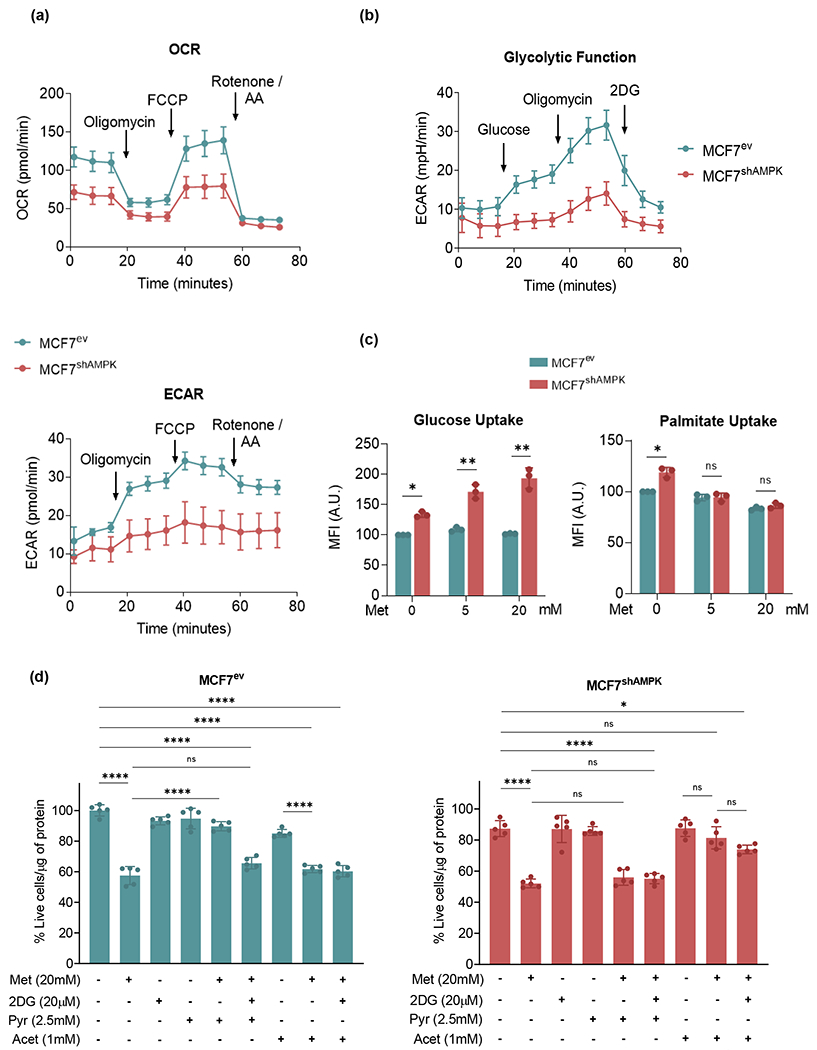Figure 3.

AMPK is critical to upregulate glycolysis in response to metformin challenge. (a): Oxygen consumption rate (OCR) (upper panel) and extracellular acidification rate (ECAR) (lower panel) of MCF7ev and MCF7shAMPK cells were measured using a Seahorse XF96 analyzer. MCF7shAMPK cells show lower OCR and ECAR rates under basal conditions as well as after oligomycin and FCCP treatments. (b): MCF7shAMPK cells show lower glycolytic activity at baseline and are less capable of activating glycolysis after ETC inhibition with oligomycin. (c): Cells were incubated with fluorophore-labeled glucose (2-NBDG) and bodipy-palmitate and intracellular fluorescence was measured. Glucose uptake was increased in MCF7shAMPK cells while palmitate uptake was similar when compared to MCF7ev cells both under basal and metformin-challenge conditions. (d): MCF7ev and MCF7shAMPK cells viability was tested with a 20mM metformin (Met) challenge with or without glycolysis inhibitor 2-DG (20 mM), 2.5mM pyruvate, 1mM acetoacetate. Pyruvate was capable of rescuing cell survival in an AMPK-dependent way in MCF7ev cells. MCF7shAMPK, in turn, were responsive to being rescued by acetoacetate but not pyruvate. All experiments are representative of at least 3 independent biological replicates. Data are presented as mean ± SEM. Statistical analysis was performed using One-way ANOVA. ns not significant; * p < 0.05; ** p < 0.01; *** p < 0.001; **** p < 0.001.
